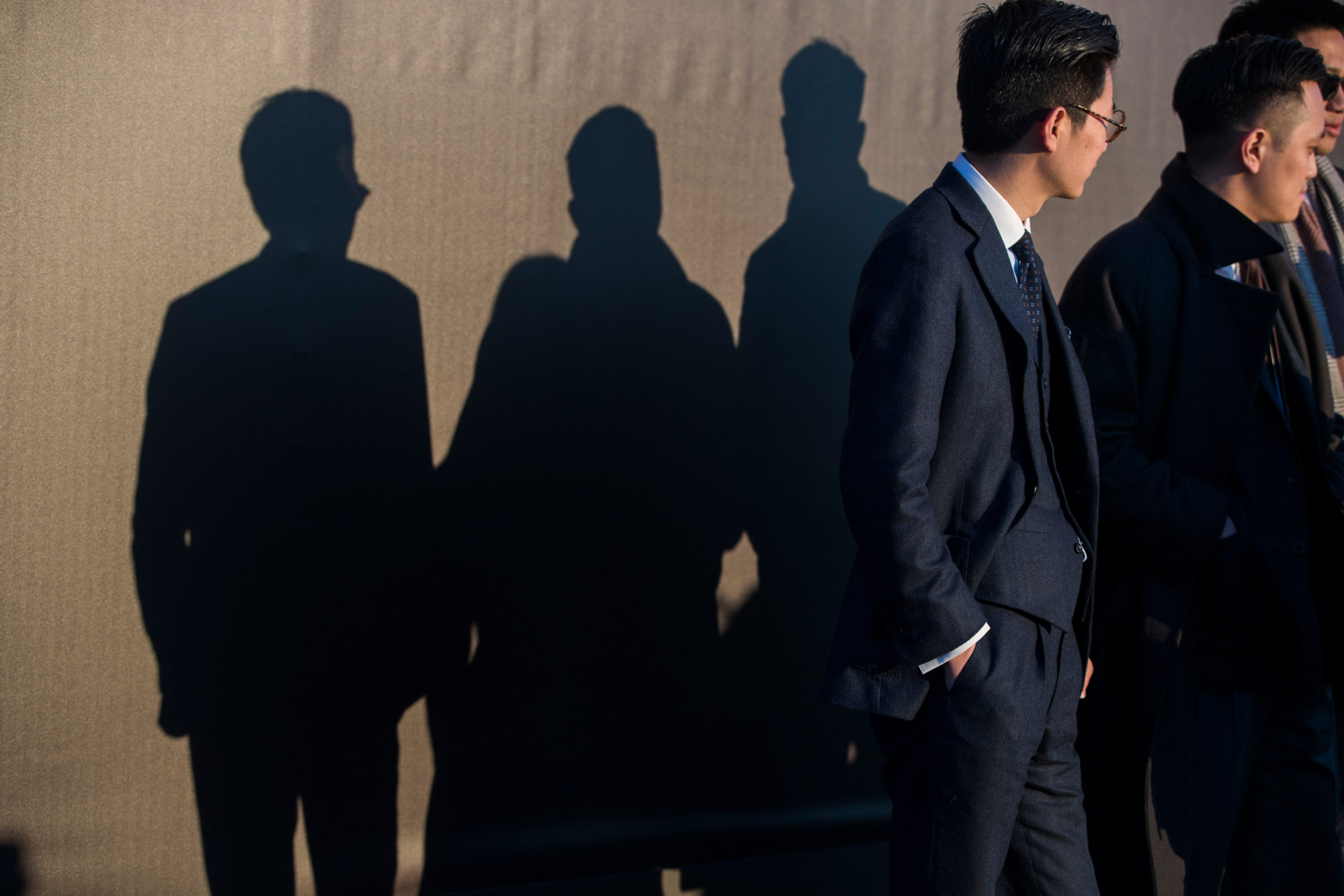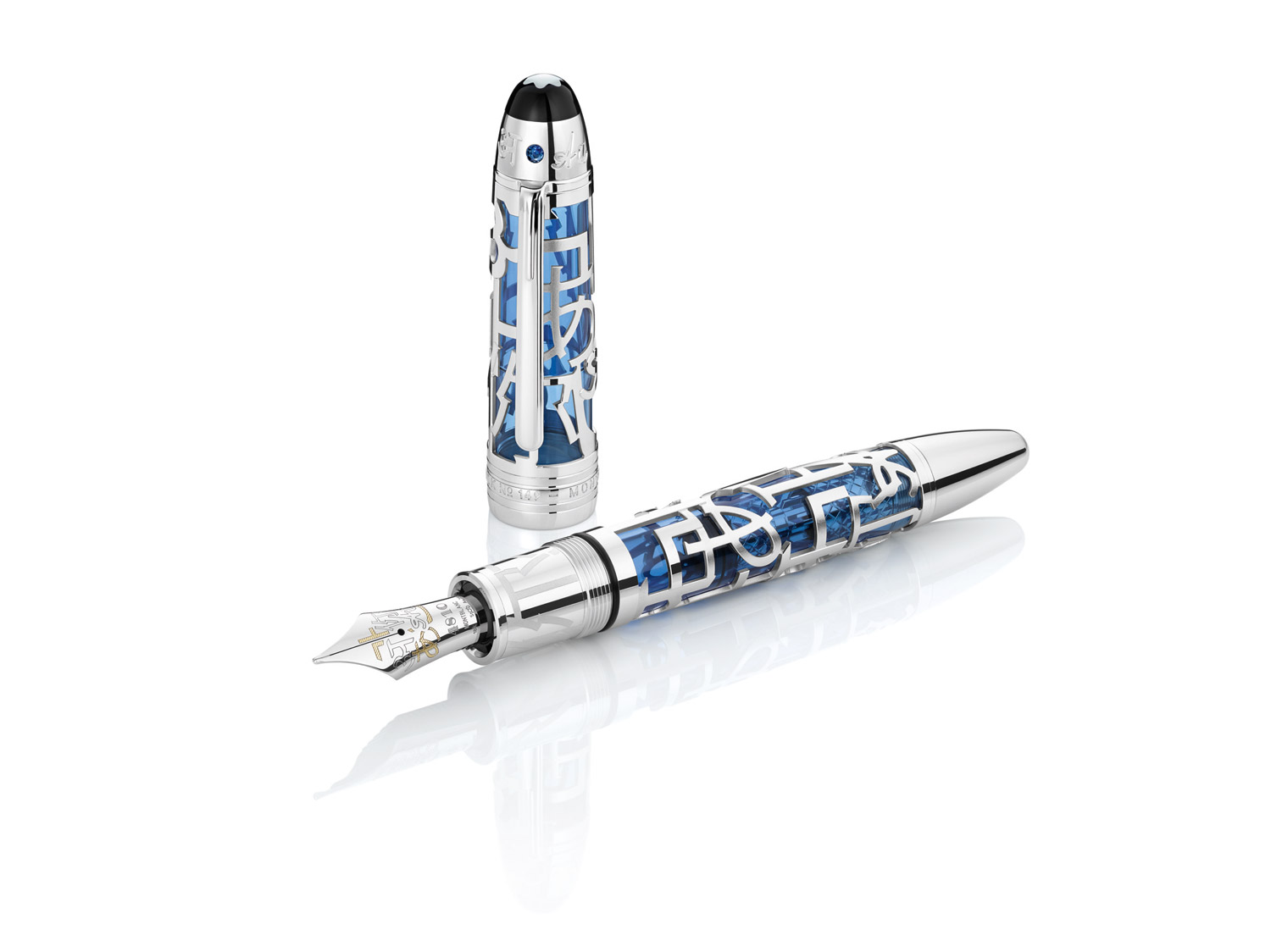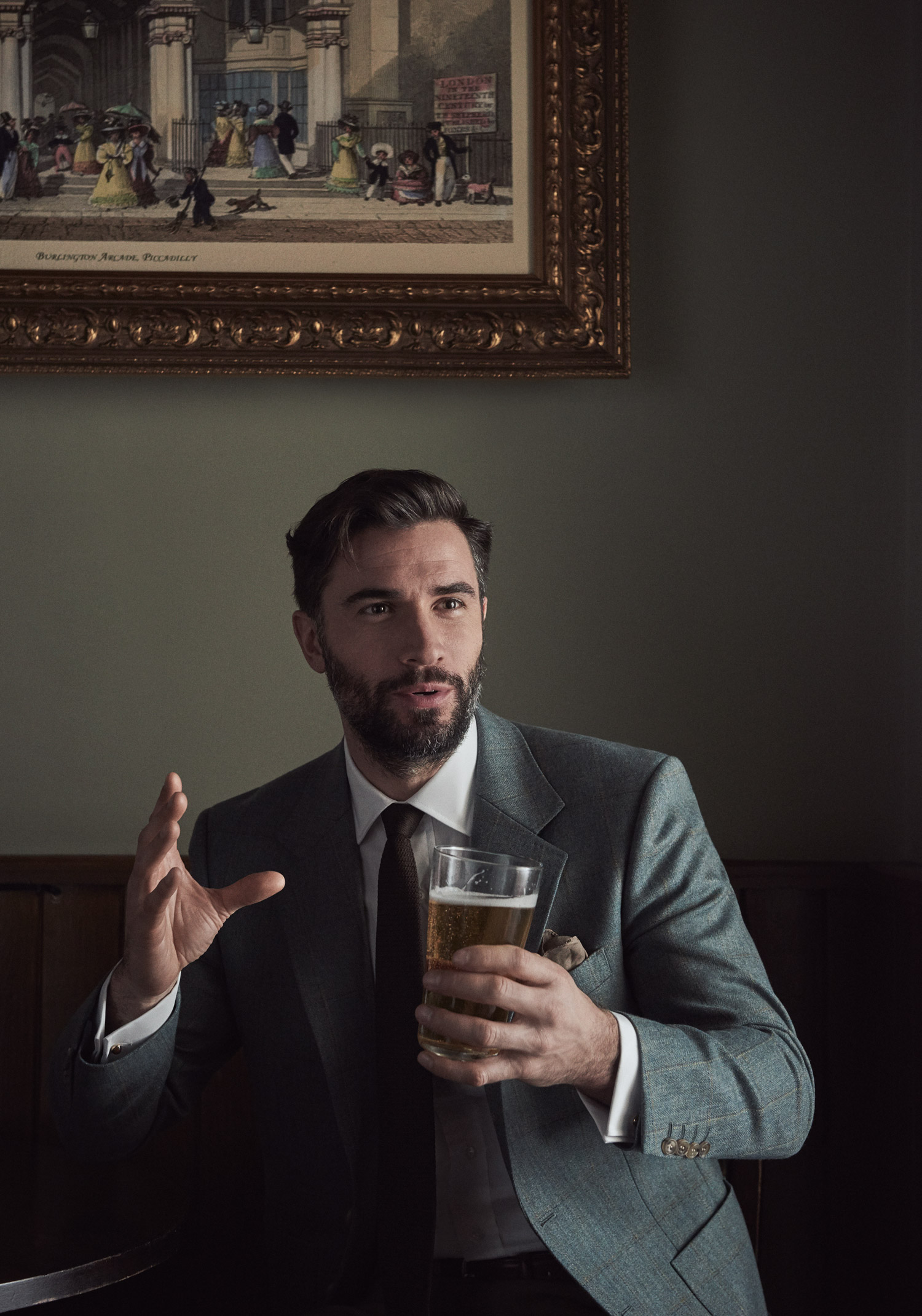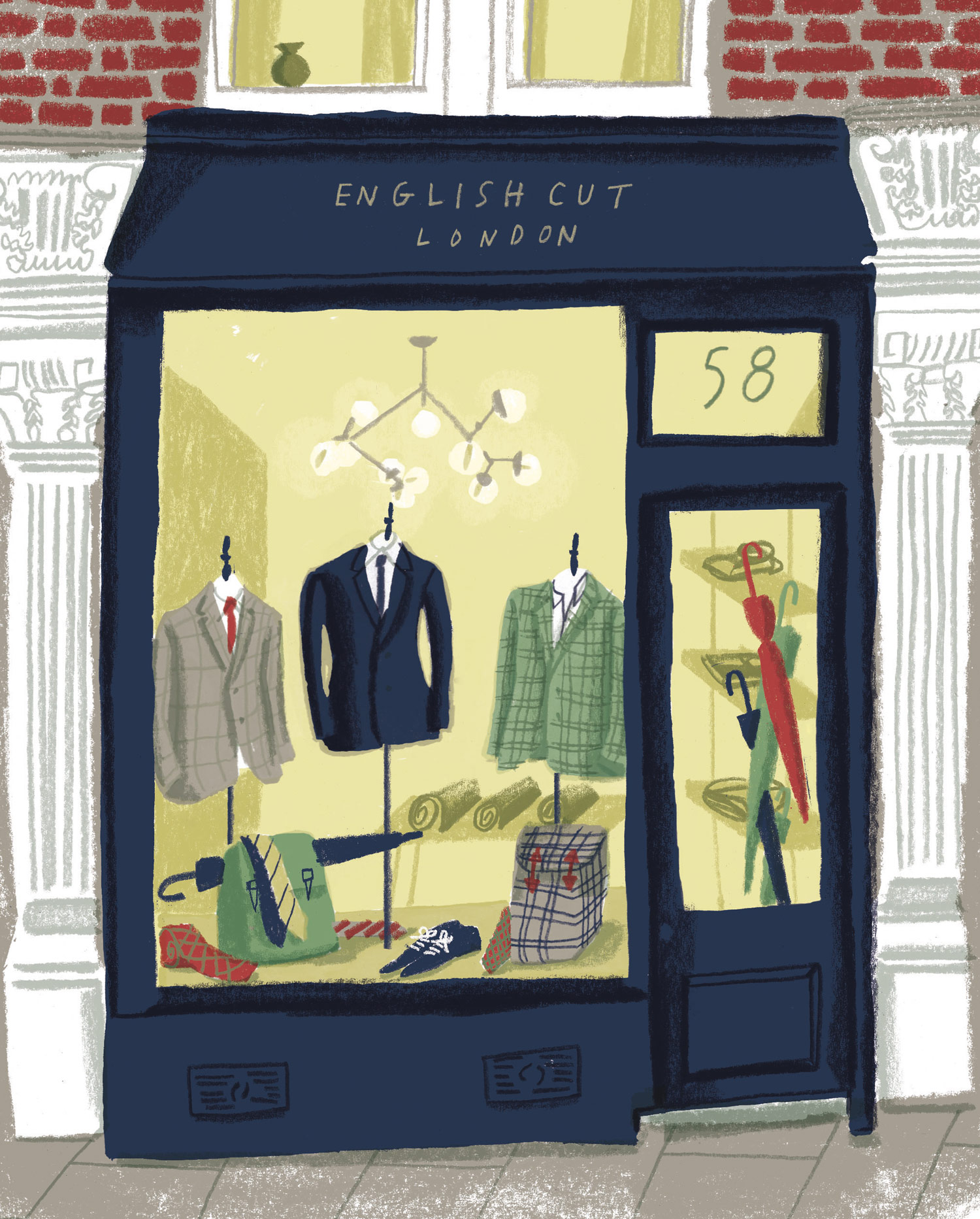Where once a navy two-piece suit was the go- to uniform for white-collar workers the world over, now the rules of the boardroom have changed: major financial institutions JP Mor- gan and PricewaterhouseCoopers have started encouraging their employees to come to work dressed in more casual attire.
Revolutionary though this collective loos- ening of ties may sound, it’s been that way in the offices of ultra-modern tech companies since the beginning. Silicon Valley leaders such as Facebook CEO Mark Zuckerberg and Ins- tagram founder Kevin Systrom, for instance, both sport a casual uniform of trainers and open-neck shirts day in, day out.
The changing mood in menswear has been reflected on the runways of London, Paris and Milan. Over the past few seasons, fewer shirt and tie combinations have been shown by even the most traditional designers, with la- bels favouring a more casual, sports-inspired approach to the clothes they show. One need only look at the brands dominating the pages of glossy fashion magazines right now – Vetements or Gosha Rubchinskiy (both of which specialise in styled luxury sportswear) – to realise that the world of menswear is rapidly moving in a more casual direction.
Even the more traditional retailers have noticed a change. “There’s been an increase in sales of sports jackets and tailored trousers as they’re being teamed with more casual pieces such as jeans and knitwear,” says Fiona Firth, buying director at Mr Porter. “This has had an effect on the relevance of the tie to a man’s wardrobe, as men are frequently wear- ing open-collared shirts without ties, which coheres to this relaxed style.”
At the beginning of January, I embarked on a tour of Europe’s major fashion capitals in a bid to distil the trends we’ll be wearing next winter, and I’m pleased to report that though things are looking sportier than ever, tailoring (in one form or another) still plays a prominent role in the modern menswear vernacular.
In London, the name on every editor’s lips was Grace Wales Bonner. Known for her immaculately tailored collections, there was a crisp military air to the frock jackets and dou- ble-breasted suits she showed. Cut close to the body, it was a look mirrored at that other British stalwart Alexander McQueen. The key here, however, was that no matter how beautifully tailored the suits were, there wasn’t a tie in sight. It was the same at Parisian brand Lanvin, where extraordinary dove-grey suits with origami seams were worn with nothing beneath them – the effect was contemporary in the extreme. At Cerruti, one of the most traditional tailoring brands to show in Paris, collarless shirts cut from the same fabric as the suits they were worn beneath looked easy and understated. Most importantly, however, they looked smart.


In Milan, Alessandro Sartori (the former creative director of Berluti) showed his first collection for Italian tailoring powerhouse Ermenegildo Zegna. Despite the fact that Zegna is arguably the most successful luxury-suit manufacturer in the world, the collection focused primarily on sportswear and heavily textured outerwear. That the dressiest look in the collection (which was shown in an enormous warehouse punctuated with Anselm Kiefer sculptures) consisted of a single-breasted dinner suit worn with a kimono-style shirt and a baseball cap, spoke volumes of the sea- son’s laid-back mood. There were track pants with elasticated cuffs worn with classic sports jackets, just as there were oversized coats in teaseled wools and classic suits finished with sporty contrast sleeves.
The other major Milanese tailoring houses embraced softness with similar gusto. At Canali, jackets of silk and cashmere were worn with rollnecks and in some cases nothing but scarves – a sense of elegance maintained by combinations of tonal hues. At Pal Zileri, soft-shouldered, three-piece corduroy suits in shades of jalfrezi and Madras were also worn with rollneck sweaters. There was also an appealing bookishness to the looks presented at both these brands, which felt as elegant as they did careworn.
Which brings me neatly on to perhaps the most prominent trend of the entire menswear merry-go-round. It’s rare for one fabric to be used extensively by every label in one season, but for AW17 that fabric is corduroy.
“Don’t be afraid to experiment with new and unexpected ways of styling your suit. Team a double-breasted two-piece with a shawl collar shirt in a tonal shade”
At Herme?s, belted corduroy overcoats in shades of pinot noir and smudged graphite had an understated, 70s-esque appeal. At Giorgio Armani, similarly smokey corduroy outer layers slipped down the runway like syrup. At Dior Homme, the look was altogether brighter and more modern, with a cherry-red needle cord suit acting as the sartorial centrepiece of the show.
The grand master of sprezzatura, Brunel- lo Cucinelli, tackled the trend with a typical- ly deft hand. Impossibly light and as soft as goose down, Mr Cucinelli’s persimmon-hued jumbo cord suits begged to be worn (almost as much as they begged to be fondled). Unsurprising, then, that – in the words of Mr Cucinelli himself – “you’d have to sell your child to afford one”.
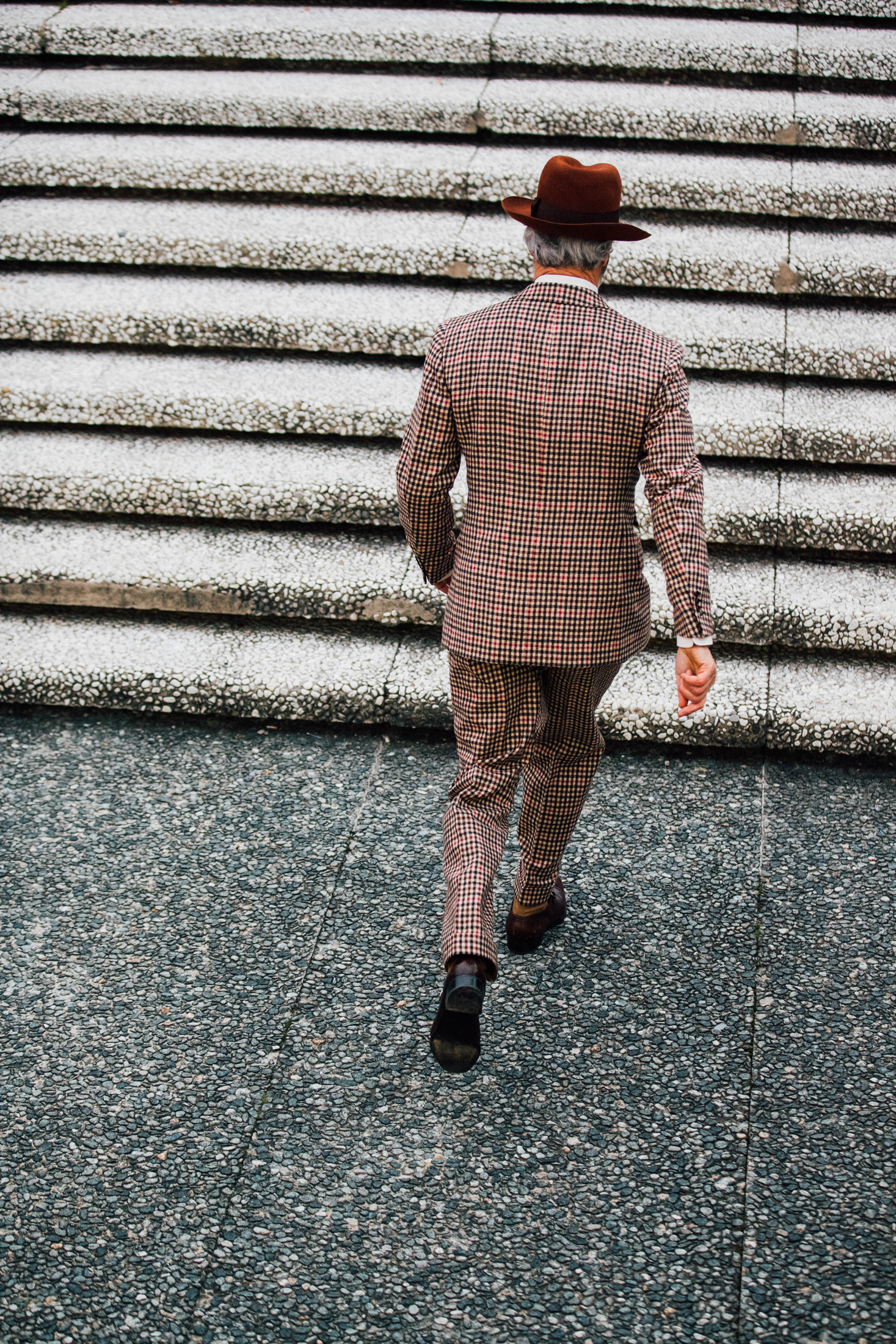
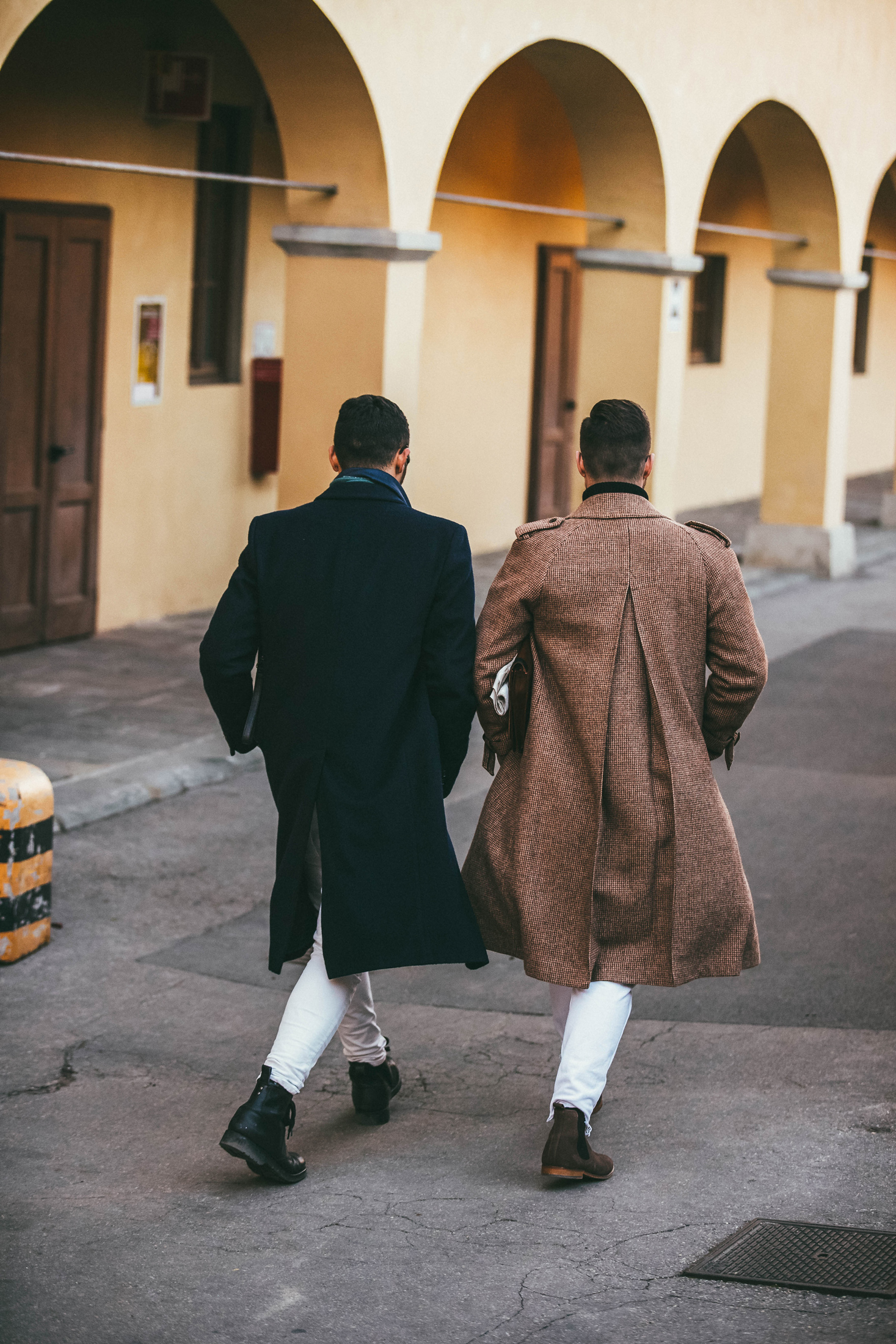

The corduroy trend reached its zenith at Prada, where Miuccia sent out studious-looking young men decked out in vintage-cut jumbo cord suits. Resplendent in autumnal shades of maple leaf, ginger, Beaujolais and Vimto, the trousers and jackets were teamed with chunky pony-skin desert boots, patchwork tweed blousons and sweaters finished with chocolate-box watercolour paintings.
If the look you’re going for is less librarian and more lounge lizard, then next season’s velvet trend is probably for you. From flowing inky-blue trousers at Giorgio Armani and Louis Vuitton, to dark tracksuits at Korean brand Wooyoungmi and sumptuous patterned suits at Etro, the velvet garments on show in London, Paris and Milan felt Dickensian and decadent.
Parisian bottier Berluti embraced the velvet trend with aplomb. The first collection from nascent creative director Haider Ackermann – who is as well known for his architectural womenswear as he is for his rakish men’s clothes – the tailoring within felt relevant and on point. Dusty-hued, close-cut velvet suits were worn with hefty cowboy boots and oversized overcoats. Shot through with a dose of Gallic insouciance, the tailored items on show might have looked scholastic, but they were cut for business.
So, to summarise, the most important tailoring trends to be aware of for autumn/winter 2017 are as follows: first – by all means wear a suit, but don’t be afraid to experiment with new and unexpected ways of styling it. Team a double-breasted two-piece with a shawl collar shirt in a tonal shade, for instance. Or wear your single-breasted suit with a knitted openneck shirt over a rollneck. Second – be sure to invest in a whole heap of corduroy, preferably in muted, earthy tones. Third – buy yourself a high-quality velvet jacket – it’s the easiest route into the trend. Fourth, and finally, if there’s anything I’ve learned on the menswear trail, it’s that “tailored” need not equate to “uncomfortable”. Just because something is cut to your shape does not mean that it should be constricting. Whether you’re wearing casual separates or a fully canvassed three-piece suit, wear tailored clothes cut from comfortable fabrics and you’ll reap the rewards.
